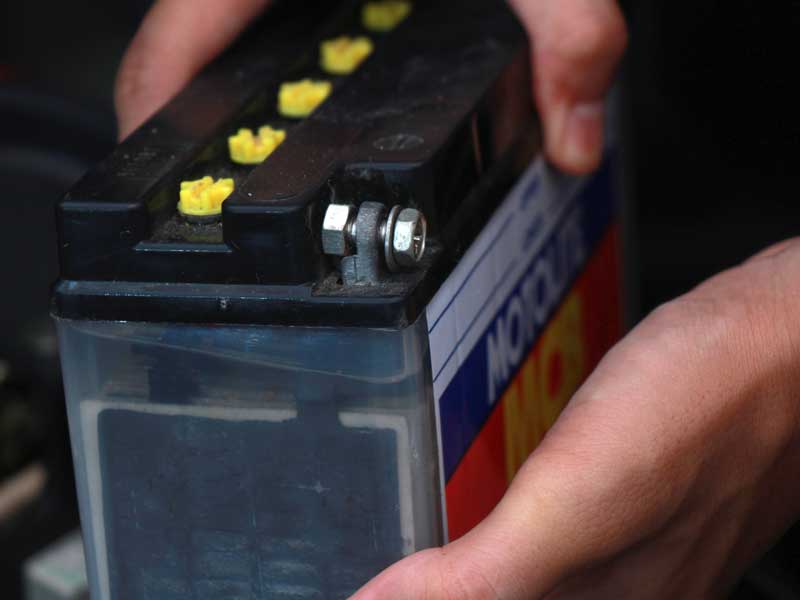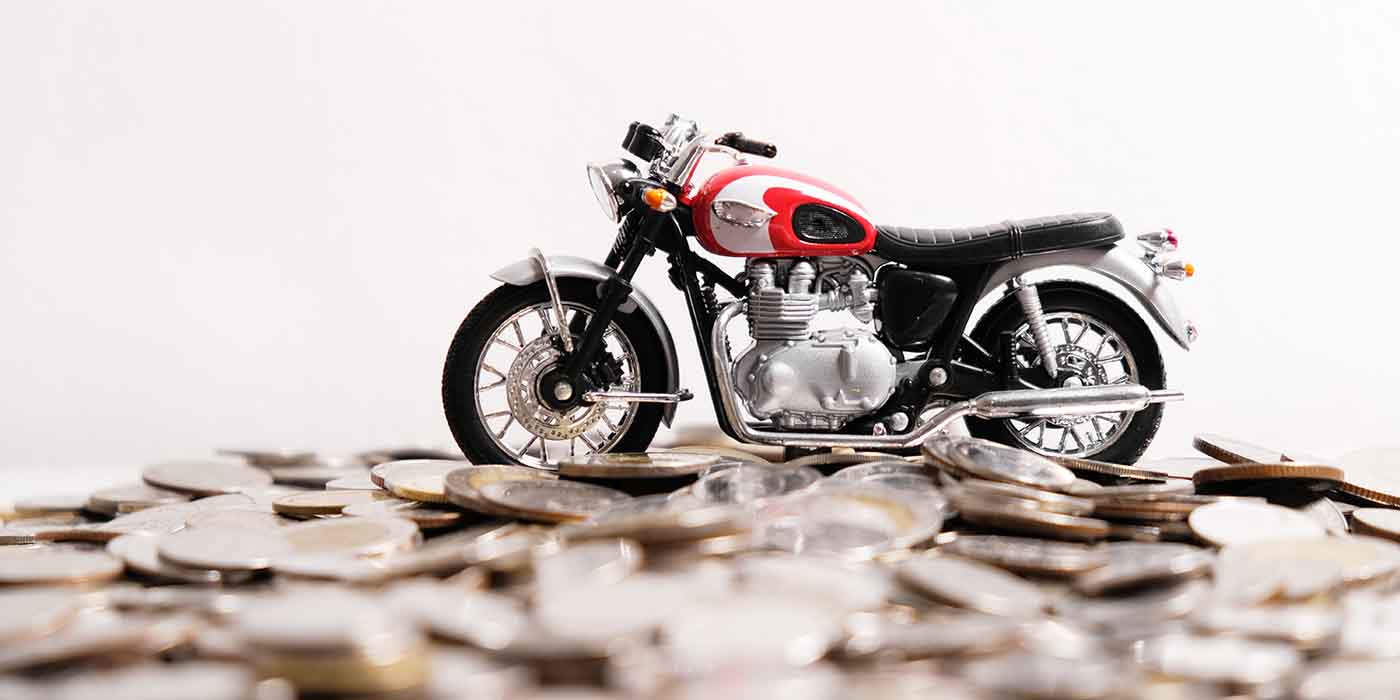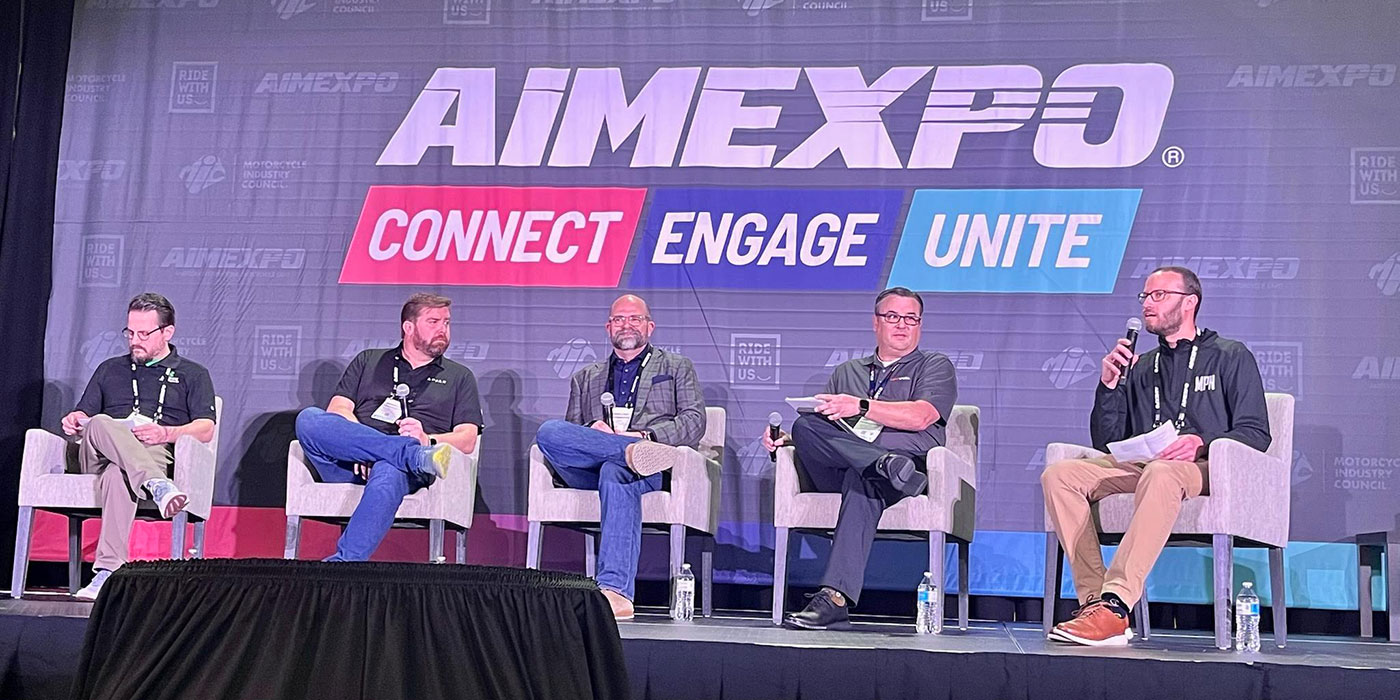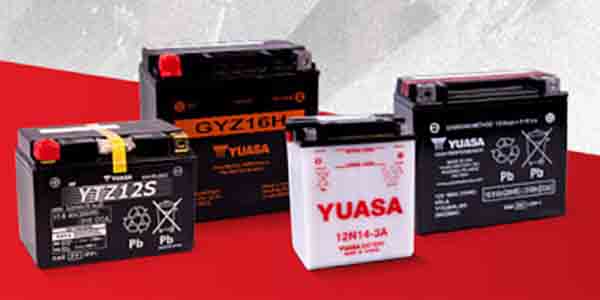Following ‘Current’ Battery Technology Trends
[dropcap]I[/dropcap]t was a feud over frog legs that led to the invention of the battery more than 200 years ago. Alessandro Volta is credited with inventing the battery in 1800, but he only stumbled onto it as he was trying to disprove a theory of another scientist who found touching frog leg nerves to metal made them move, thus proving “animal electricity.” Volta set out to show that frog legs were not necessary for carrying electricity if two pairs of metals were connected by something wet – which produced the same effect.
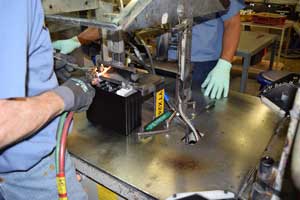
factory, but were impressed that the terminals on each battery are soldered by hand, by a real person.
From frog legs to chemistry, batteries have been continually improved upon over the years. But will the basic battery as we know it give way to something else or is it here for the foreseeable future? In the powersports industry, traditional lead-acid chemistry is still the leader of the pack. However, there are some new technologies/chemistries that are beginning to take hold. We spoke to several battery manufacturers to find out what they had to say about the subject.
Future of the Lead-Acid Battery
As one of the oldest rechargeable battery chemistries, lead acid is rugged, forgiving if abused and economical. Lead acid has been a mainstay in the powersports industry for years and will probably remain in use for many more years to come in one form or another, according to our panel of experts.
AyKaun Okuma, senior director, aftermarket at Yuasa Battery, Inc., says that Absorbed Glass Mat (AGM) batteries have grown in popularity over the past several years. “The most desirable types are the high performance
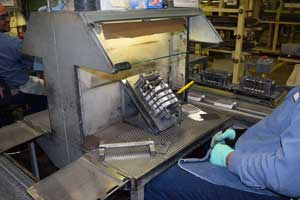
versions, which include our Yuasa GYZ line of high-performance AGM batteries. The reason is that people are looking for as much power as they can get to satisfy the ever-increasing demand for electrical power with today’s vehicles, including the increasing use of aftermarket accessories.”
“The trends in the marketplace indicate the customer wants it ready-to-go now,” says Gale Kimbrough, engineering and technical services manager for Interstate Batteries. “National trends indicate a rise in the do-it-for-me group over the last few years. Also, AGM batteries are a dominant seller.
“Interstate Batteries offers factory activated batteries as well as the non-factory activated. Interstate is constantly adding AGM battery sizes to our line-up,” says Kimbrough. “Even though AGM batteries have been around a while, there are additional OE sizes
each year.”
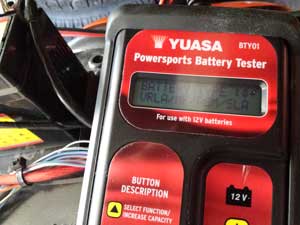
AGM batteries have been used in demanding military and off-road applications for many years. The sealed, glass mat design has many longevity and reliability based benefits.
“Each plate in the battery is wrapped in a fibrous glass matting, which not only absorbs all liquid electrolyte, but keeps the plates separated in a cushioned environment,” says Robert “Smokey” White, Motobatt Batteries director of sales and marketing for the Americas. “This stops the plates from vibrating, which can breakdown the plate and cause short circuits between the plates or break plate welds, which result in battery failure. The thick, heavy plates used in MotoBatt designs really make the difference here.”
AGM batteries also have a much lower inherent self discharge rate than wet flooded types. White says that MotoBatt’s higher amp hour AGM battery can also discharge more deeply and recover repeatedly under vehicle alternator charge or through maintenance charging. “A standard flooded cell battery is not capable of withstanding this type of cycling, without premature failure.”

While lead acid batteries have been around for a long time and have improved over the years, manufacturers are hedging that even if another battery technology gains ground, some form of the tried and true lead-acid battery will continue to be used for a long time to come. “Other battery technologies are much more expensive today than lead acid,” says Kimbrough.
“Lithium Ion is probably one of the next chemistries due to its weight comparative to lead acid. However, some form of lead acid or enhanced lead acid will be around for a long time. Keeping a lead acid charged properly during seasonal downtime is essential to keeping it strong and
ready to go.”
MotoBatt’s Smokey White says they have a new battery targeted to applications where riders need higher capacity than stock. “Our new MBYZ16H and HD is a high performance version of our popular MBTX12U. It is targeted at Harley-Davidson, Dual Sport, ATV markets and any application that requires a higher capacity battery to feed power guzzling accessories. We also have a new small family of four batteries that we have converted to a new black housing for increased focus on the Harley-Davidson Market.”
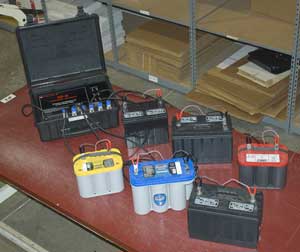
New Chemistries
Lithium-ion-phosphate or lithium-phosphate (LiFePO4) produces a nominal 3.3V per cell and offers long cycle life. LiFePO4 has a good safe record, but exhibits higher self-discharge than other Lithium-ion systems. There are many other lithium-ion based batteries, some of which are described in detail on the Battery University website (www.batteryuniversity.com). According to the site, most research activities today revolve around improving lithium-based systems.
Besides powering cellular phones, laptops, digital cameras, power tools and medical devices, Lithium-ion is also used for electric vehicles. The battery has a number of benefits, most notably its high specific energy, simple charging, low maintenance and being environmentally benign. And we should note that a big advantage for powersports is the low weight and size compared to lead-acid counterparts.
But not everyone is sold on Lithium-ion-phosphate at this stage as some battery manufacturers believe further development is needed before bringing it to market.
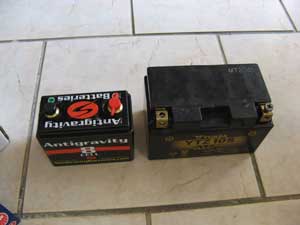
“We are constantly looking at future trends and different chemistries than lead-acid,” says Yuasa’s Okuma. “We are looking at the next evolution and different applications for our chemistries. We will make sure whatever we come up with next works before we bring it to market because that is our philosophy. Our reputation is at stake, and more importantly our customers’ satisfaction is at stake. So we are purposely cautious as we proceed to the next evolution.”
Kathy Nicoson of EarthX, says that they are heavily involved in the experimental aircraft market and are currently the OEM supplier for 11 manufacturers, but that market is far different than the powersports market where many inexpensive offshore lithium-based batteries have flooded the market, and in some cases made it difficult for premium brands to succeed.
Nicoson says that most of the experimental aircraft actually use a powersports battery because they are often powered by a powersports-style engine (i.e., Rotax). Lithium-ion-phosphate has great longevity and capacity, which is critical in any aircraft where a failure can be catastrophic.
One of the drawbacks of lithium batteries is that they are very sensitive to over charge and discharge. Customers who buy these batteries (and dealers who service them) must use special chargers designed for this chemistry and that have the ability to detect when it is charged to the proper levels.
Lithium-ion chargers are a voltage-limiting device similar to the lead-acid system. The difference lies in a higher voltage per cell, tighter voltage tolerance and the absence of trickle or float charge at full charge. While lead acid offers some flexibility in terms of voltage cut off, manufacturers of Lithium-ion cells are very strict on the correct setting because Lithium-ion cannot accept overcharge, according to the Battery University website. Because of this, experts say that dealers should pay close attention to the warranties offered by various manufacturers. The window for over charge or discharge is very small and once beyond these limits the warranty will often be voided.
Battery Maintenance
Dealers need to make sure they properly maintain their batteries in inventory and rotate stock, according to Okuma. “Yuasa makes a 10-bank maintainer/charger that can be left on the bench and keeps 10 batteries at a time fresh and ready. We also have a digital tester that helps dealers diagnose whether a customer’s powersports vehicle has a battery issue or whether there’s an electrical issue on the vehicle. We don’t want people to buy a new battery if they don’t have to because it makes us – and our dealer – look bad.”
PulseTech Products Corp. has introduced its SC-6, a 6-Station Recovery Charger designed to recover, charge, maintain and desulfate from one to six 12-volt lead-acid batteries.
“The compact and portable recovery charger, perfect for individuals with multiple 12-volt battery charging needs and/or motorcycle and powersports products dealers, works with any 12-volt battery type, including VRLA, AGM, gel and flooded cell,” says Zena Johnson, marketing manager, PulseTech Products Corp. “Each of the six charging stations operates in isolation, allowing any combination of battery brands to recharge simultaneously.
The SC-6 has six independent channels that profile the condition of each battery then automatically cycle through a recovery and charge process that applies the correct charge (variable up to 6A) as well as PulseTech’s optimized high frequency waveform. This advanced Pulse Technology removes sulfate crystals from the battery plates, increasing the battery’s ability to accept, store and release energy, extending battery life up to 5 times.”
Battery Sales
Selling batteries is a service, according to battery manufacturers. A customer can buy a battery online or at a big box store, but they won’t have a way to test their old battery. Dealers provide knowledgeable salespeople to recommend the right one battery for the customer’s application, especially if they need more than an OE replacement. Consumers are on their own once they purchase through alternative vendors outside of the dealer network.
“For dealers who sell and service batteries, dealers can offer customers free battery checkups to help them maintain their batteries and build the customer relationship,” says Okuma. “If customers include the additional value-added services when buying a battery from your store then it becomes less enticing for a customer to buy online.
Dealers need to communicate to their customers that proper maintenance is essential for long battery life. If a bike is only ridden sporadically, then a float charger needs to be put on the battery regularly to maintain the level. Another option, according to experts, is that a battery should be charged at least once a month if not used regularly.
Since overcharging can be a problem, Okuma recommends that powersports dealers consider selling battery chargers and accessories that are designed for powersports-specific batteries instead of an automotive charger that can cause damage to a cell. And once a cell goes bad, it will bring down the rest of the battery.
In the end, the debate over what is better will be decided by your customers’ wallets. There are some great advantages to Lithium-ion, but the cost may be prohibitive for some customers at this point. And with the continued development of lead-acid chemistries such as AGM, there seems to be a lot of life left in this old “frog legs” technology.

